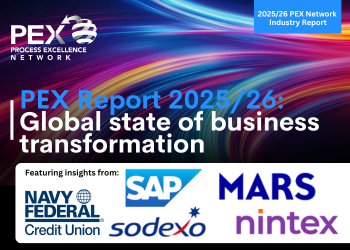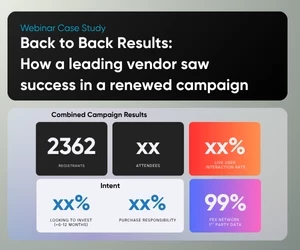The strategic role of process excellence in post-merger financial integration
By harmonizing financial processes, from procure-to-pay to order-to-cash, process excellence ensures the integrity and consistency of financial data
Add bookmark
In the complex world of mergers and acquisitions, successful integration goes far beyond aligning systems or cutting costs. It requires a strategic approach to process design that ensures the combined entity can operate at scale with agility and control. At the heart of this transformation lies process excellence.
In this interview, Puneet Thakkar, finance process and systems transformation at Google and PEX Network Advisory Board member, shares his insights into what process excellence means in the context of post-merger integration (PMI), particularly within the finance function.
He unpacks how it serves as the backbone of a resilient operating model, drives synergy realization, and aligns day-to-day execution with the broader strategic goals of the deal. From early involvement in due diligence to leveraging emerging technologies like artificial intelligence (AI) and API-driven architectures, Puneet provides a forward-looking perspective on why process excellence is no longer a tactical afterthought but a critical enabler of M&A success.
Join the PEX Network community

Don't miss any news, updates or insider tips from PEX Network by getting them delivered to your inbox. Sign up to our newsletter and join our community of experts.
Learn MorePEX Network: How do you define ‘process excellence’ in the context of post-merger integration?
 Puneet Thakkar: In the high-stakes environment of post-merger integration (PMI), process excellence transcends its traditional definition of continuous improvement.
Puneet Thakkar: In the high-stakes environment of post-merger integration (PMI), process excellence transcends its traditional definition of continuous improvement.
Here, it is the strategic discipline of designing and implementing a unified, resilient, and scalable operating model that captures the intended value of the deal.
It’s not merely about tidying up workflows or eliminating redundancies post-close. Instead, it’s a proactive function that focuses on three core pillars:
- Strategic harmonization: This involves a rigorous assessment of the processes from both legacy organizations to design a future-state model. The goal isn’t always to pick the ‘better’ process but to select or create the one that best serves the strategic objectives of the newly formed entity, be it speed, scale, control, or innovation.
- Risk mitigation and control: M&A activity introduces immense risk, especially within finance. Process excellence acts as the primary defense, ensuring that as systems and teams are combined, critical financial controls (e.g. SOX compliance, segregation of duties) are not compromised. It’s about building a robust control environment from day one.
- Value acceleration: Every M&A deal is built on a synergy thesis. Process excellence is the engine that drives the realization of those synergies. Whether it’s consolidating procurement to increase buying power or streamlining the record-to-report (R2R) process to shorten the financial close, process excellence makes the theoretical value of the merger tangible and measurable.
Ultimately, in PMI, process excellence is the bridge between the M&A strategy on paper and the operational reality of a single, high-performing organization.
PEX Network: Why is process excellence critical to the success of post-merger financial integration?
PT: Process excellence is not just important to post-merger financial integration; it is the bedrock upon which success is built. The finance function is the nervous system of an organization, and during an integration, it’s under immense strain. Without a disciplined approach, it can quickly become the primary point of failure.
Its criticality stems from four key areas:
- Ensuring a single source of truth: Leadership cannot steer a newly combined company with conflicting data. By harmonizing financial processes, from procure-to-pay (P2P) to order-to-cash (O2C), process excellence ensures the integrity and consistency of financial data. This unified view is essential for accurate forecasting, performance management, and strategic decision-making.
- Accelerating synergy capture: Financial synergies are often the easiest to identify but the hardest to realize without operational discipline. For example, consolidating vendor payments or streamlining travel and expense(T&E) policies requires a detailed redesign of underlying processes and systems. Process excellence provides the framework to execute these changes quickly and effectively, directly impacting the deal’s ROI.
- Maintaining regulatory compliance and control: Combining two different control environments is fraught with risk. A missed step can lead to material weaknesses, regulatory fines, and a loss of investor confidence. Process excellence ensures that a robust, auditable control framework is designed and embedded into the new processes from the start, de-risking the entire integration.
- Managing human and cultural integration: Poorly defined processes create ambiguity, frustration, and burnout for finance teams. A well-designed, clearly communicated process provides clarity on roles, responsibilities, and expectations. It’s a powerful change management tool that helps align teams from different corporate cultures around a common way of working, fostering collaboration and reducing friction.
PEX Network: How does process excellence align with broader strategic goals during M&A integration?
PT: Process excellence acts as the essential translator between strategic intent and operational execution during an M&A. The deal’s strategic rationale, whether it’s market expansion, technology acquisition, or achieving economies of scale, remains purely aspirational without the operational mechanisms to bring it to life.
Here’s how it aligns with specific strategic goals:
- If the goal is economies of scale: Process excellence provides the methodology for rationalizing systems (e.g. moving from two ERPs to one), consolidating shared services, and standardizing procurement processes to leverage the combined entity’s scale for better pricing and terms.
- If the goal is market expansion: Integrating a company in a new geography requires a playbook. Process excellence helps create a standardized, scalable financial operating model that can be rapidly deployed, ensuring consistent controls and reporting across all regions while allowing for local statutory compliance.
- If the goal is acquiring new technology or products: Process excellence ensures the new product’s financial lifecycle (e.g. billing, revenue recognition) is seamlessly integrated into the parent company’s core financial systems. This prevents revenue leakage and ensures the profitability of the acquired asset can be accurately tracked from day one.
- If the goal is speed and agility: A well-designed integration focuses on creating lean, automated processes. This reduces bureaucracy and manual effort, freeing up the finance team to focus on forward-looking analysis and strategic partnership with the business, thereby enabling the entire organization to move faster.
In essence, process excellence ensures that the ‘how’ of the integration directly enables the ‘why’ of the deal.
PEX Network: In your experience, how early should process excellence initiatives be involved in the M&A lifecycle?
PT: Process excellence must be involved from ‘day zero.’ meaning it should be woven into the M&A lifecycle from its earliest stages, ideally during due diligence. The traditional model of bringing in process experts post-close to ‘clean up the mess’ is inefficient and value-destructive. A modern, strategic approach embeds process excellence throughout the M&A lifecycle.
- Due diligence: A process excellence lens during due diligence moves beyond financials to assess operational health. We should be asking: What is the maturity level of their core financial processes? What is their level of tech debt? Are their processes manual and person-dependent, or automated and scalable? The answers to these questions provide a clear picture of the integration’s complexity, cost, and risk, which can even influence deal valuation.
- Pre-close integration planning: This is where the core work happens. The process excellence team should be co-designing the target operating model (TOM) for finance, creating the integration roadmap, and defining Day 1, Day 100, and Day 365 priorities. This ensures that, on the day the deal closes, the team is executing a well-vetted plan, not starting from scratch.
- Post-close execution an optimization: This phase is about disciplined execution of the pre-defined plan. The role of process excellence shifts to program management, performance monitoring against synergy targets, and leading continuous improvement initiatives as the newly combined organization stabilizes and matures.
Involving process excellence early transforms it from a reactive, tactical function into a proactive, strategic partner that de-risks the deal and accelerates value creation.
PEX Network: What innovations or emerging trends will impact financial integration most significantly in the next five years?
PT: The next five years will see a fundamental shift from manual, labor-intensive integration activities to an approach that is predictive, automated, and data-driven. I see three major trends leading this change:
- AI-powered process mining and harmonization: Today, consultants spend thousands of hours manually mapping ‘as-is’ processes from two companies. In the near future, AI-driven process mining and task mining tools will automatically analyze system logs from both companies’ ERPs (e.g. SAP and Oracle). They will not only visualize the existing processes but also use generative AI to recommend an optimized, best-of-both future-state process, complete with simulated performance metrics and risk profiles. This will compress months of analysis into weeks.
- Predictive integration management: We will leverage AI and machine learning models trained on data from thousands of past M&A deals. These models will act as an early warning system, predicting potential friction points such as cultural clashes in specific departments, system incompatibilities that lead to data bottlenecks, or a high risk of talent attrition in critical roles before they derail the integration. This allows leaders to move from reactive problem-solving to proactive intervention.
- The rise of the composable, API-first architecture: The era of monolithic, on-premise ERPs is waning. As companies adopt more ‘composable’ architectures using best-of-breed cloud applications connected via APIs, financial integration will become less about massive, high-risk ‘rip and replace’ projects. Instead, it will be about intelligently connecting modular systems and mapping data flows. This modularity will dramatically increase the speed and reduce the cost of integrating the financial operations of an acquired company.
Together, these trends will shift the focus of financial integration from brute-force execution to intelligent, predictive design, enabling companies to achieve synergies faster and with far greater certainty.
PEX Report 2025/26: Global state of business transformation

The PEX Report 2025/26 examines the results of our annual survey of more than 200 professionals with insights from more than a dozen industry business and thought leaders from across the globe. Contributors include leaders from Mars, Navy Federal Credit Union, Pacific International Lines, Sodexo, SAP and Nintex!
Explore why true business transformation is not a singular project but an ongoing journey, one that requires visionary leadership, cross-functional collaboration, technological prowess and an unrelenting commitment to agility and innovation. Those that embrace this evolution holistically are not just surviving the future, they are shaping it!
Download Now












